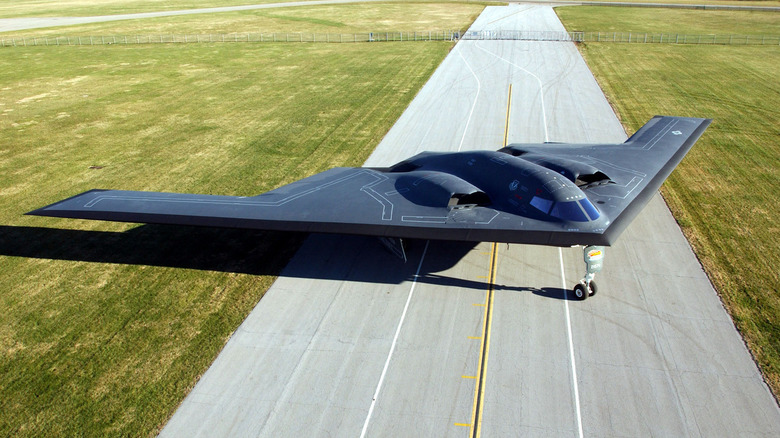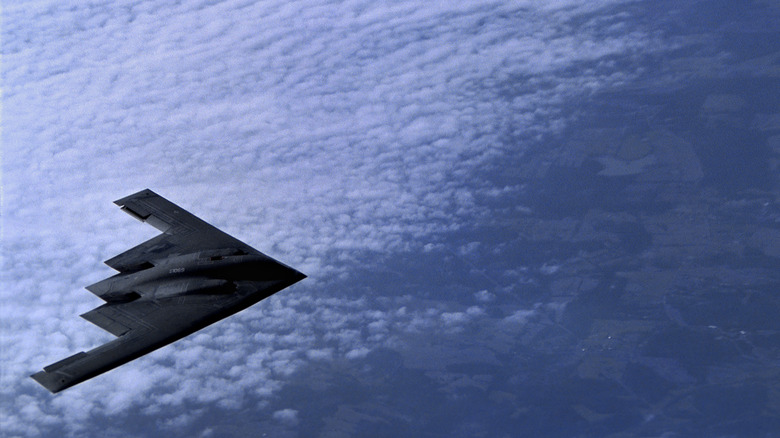Why The B-2 Bomber Couldn't Fly In The Rain Initially (And When It Was Fixed)
The B-2 Spirit "flying wing" bomber is a testament to modern technology. Its classified stealth technologies include exotic composite materials covered with a top-secret coating, which allows it to remain virtually invisible to sophisticated air defense radar systems. However, it comes with a very steep price tag — at over $2 billion per, it is the single most expensive aircraft ever built.
You'd think a high-tech bomber capable of evading enemy radar and reaching high subsonic speeds that can fly some 6,000 nautical miles without refueling to deliver 40,000 pounds of conventional or nuclear weapons (and even includes a bathroom for the pilots) on a target would be able to weather almost any storm, right? Yes, it can now, but when it first took flight, there were concerns that moisture might send the aircraft to its doom.
The world got its first look at the B-2 in 1988. It was delivered to the Air Force in 1993. As early as 1995, however, reports from the General Accounting Office (GAO) stated that the "Terrain Following Terrain Avoidance" (TFTA) radar system had a difficult time distinguishing a rain cloud from a mountainside. Not only that, but the B2's radar-evading metal skin easily deteriorated in "rain, heat, and humidity." Moisture was so troublesome that plane the needed to be stored in a hangar and was only suitable for conducting missions in "benign environments" that had relatively low humidity, no precipitation, and temperatures that were neither too cold nor too hot.
A little rain can't take away the spirit of this modern Air Force bomber
As it turns out, there was an egregious misrepresentation of facts regarding the General Accounting Office (GAO) report, which have persisted to this day, as evidenced by the numerous articles and videos that still claim it can't fly in the rain. In 1997, Air Force Gen. John Shaud wrote an article for "The Washington Post" stating there were three early versions of the B-2. The first was Block 10 (initially used for training), followed by the Block 20, with Block 30s having the finalized configuration.
There was a known flaw with the rain-resistance coating on the Block 10s. During manufacturing, the leading edge of the coating was applied incorrectly, resulting with it eroding in the rain. Additionally, the nickel compound used to smooth out the taping materials also degraded when exposed to moisture. According to Shaud, the GAO report focused solely on "the Block 10 and a few Block 20 aircraft," but not the upgraded/corrected Block 30, which can withstand not only rain and high humidity but also temperatures ranging from -65 to 120 degrees Fahrenheit. Shaud claimed both problems were fixed as of September 1997, and all B-2s would be upgraded to the Block 30 configuration by the year 2000.
To further prove the point, the Air Force held an event in 1997 — witnessed by dozens of reporters and photographers — where a team of airmen hosed down a B-2. Today, the Air Force has fewer than two dozen B-2 Spirits in its fleet, all of which are capable of flying in rain.

